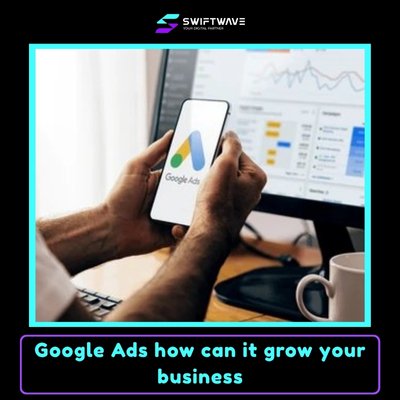PPC in Amazon is not just an advertising tool it’s the foundation of how visibility, competition, and sales work on the world’s largest online marketplace.
Every seller competing for attention on Amazon depends on PPC (Pay-Per-Click) to drive targeted traffic, rank higher, and generate consistent sales momentum.
Unlike traditional advertising, Amazon PPC puts your products directly in front of buyers who are already searching with intent to purchase.
But despite its power, most sellers misuse it wasting ad spend, chasing wrong metrics, or misunderstanding how Amazon’s algorithm actually values paid traffic.
To succeed, you need clarity: how Amazon’s auction system works, what metrics truly matter, and how PPC affects organic ranking, conversion, and profitability.
Real success in Amazon advertising isn’t about spending more; it’s about using accurate data and tactical precision to make every click count.
5 Powerful Facts About PPC in Amazon
In this guide, we will explain the five powerful facts about PPC in Amazon that every seller must know to run profitable, scalable campaigns.
1. Higher Conversion Rates Than E-Commerce
Amazon PPC delivers far stronger conversion rates than typical e-commerce ads. That’s because people on Amazon already have buying intent. They’re not browsing — they’re searching to purchase.
Average Amazon PPC conversion rates are around 9–10%, compared to 1–2% on most other e-commerce platforms. This is a huge edge. It means even moderate traffic can generate real sales — if your product listings are optimized.
Your ad alone won’t close the sale; your listing does that. High-quality images, detailed bullet points, competitive pricing, and strong reviews all convert interest into action. Before scaling PPC, make sure your listing is ready to convert.
In short: Amazon PPC gives you high-intent traffic, but your listing determines how much of that traffic becomes revenue.
2. CPC Is Volatile — Control It
Amazon PPC is based on a live auction system. You and your competitors bid for keyword placements, and the system charges you per click. Because this auction happens in real time, your Cost Per Click (CPC) changes constantly.
For low-competition categories, CPCs may stay between $0.70 and $3.00. In crowded markets like electronics or supplements, they can exceed $5 per click. Without close management, these fluctuations can quickly destroy your margins.
Control your CPC with structure and limits:
-
Set maximum bids so you don’t overspend.
-
Use negative keywords to stop irrelevant clicks.
-
Analyze keyword performance weekly and adjust bids accordingly.
-
Pause campaigns that drain spend without conversions.
You don’t win PPC by outbidding everyone. You win by bidding smart. Spending more doesn’t guarantee visibility — it guarantees higher costs.
3. ACoS and ROAS Show Different Truths
Every Amazon advertiser tracks ACoS (Advertising Cost of Sale) and ROAS (Return on Ad Spend). Both are important, but they don’t mean the same thing — and focusing on one alone can mislead you.
-
ACoS = (Ad Spend ÷ Ad Revenue) × 100% — measures how much you spend per dollar of sales.
-
ROAS = (Ad Revenue ÷ Ad Spend) — measures how much revenue you earn per dollar spent.
Example: Spend $100, earn $400 → ACoS = 25%, ROAS = 4×.
A low ACoS isn’t automatically good, and a high ROAS isn’t always sustainable. What matters is whether your campaign is profitable based on your product margins.
If your profit margin is 30%, then an ACoS under 25% keeps you profitable. Anything above that cuts into your earnings.
Use ACoS to control costs and ROAS to measure efficiency. Together, they help you balance growth and profit.
Don’t chase “perfect” metrics — chase profitable metrics.
4. PPC Supports Organic Ranking
PPC doesn’t directly boost organic rank — but it influences it indirectly. Amazon’s algorithm rewards products with strong sales velocity, conversion rates, and relevance. PPC helps build those signals by driving consistent traffic and sales.
However, if your ads generate clicks but few purchases, your ranking won’t move. Amazon tracks conversion efficiency. Only ads that lead to steady sales help long-term ranking.
To make PPC support organic ranking:
-
Align your PPC and listing keywords.
-
Optimize your product titles and bullet points.
-
Keep your pricing competitive and reviews growing.
-
Use PPC strategically during product launches to build sales momentum.
Think of PPC as your accelerator, not your ranking guarantee. It can push your product faster, but your listing must already be strong enough to stay on top.
5. Amazon Uses Multi-Touch Attribution
Amazon’s advertising system is changing. Instead of giving full credit to the last ad clicked before purchase, Amazon now uses multi-touch attribution (MTA) — meaning it tracks all ads that contribute to a sale.
For example, a shopper might first see your Sponsored Brand ad, then later click your Sponsored Product ad before buying. In the past, only the last ad would get credit. Now, credit is shared across all touchpoints.
This matters because it shows the real impact of your awareness campaigns.
Display and brand ads often assist conversions but don’t get recognized under old models. With MTA, you can see how these ads influence the buyer’s journey.
To adjust:
-
Analyze your ad mix — don’t cut awareness campaigns too soon.
-
Budget across multiple ad types.
-
Track assisted conversions as well as direct ones.
Smart advertisers now look at the entire funnel, not just the last click.
How to Use These Facts
Understanding PPC facts is one thing — applying them makes the difference. Here’s how to use these principles to run efficient, profitable campaigns:
-
Strengthen your listings first. No ad works without a strong product page. Optimize visuals, copy, and pricing.
-
Monitor CPC actively. Check bids regularly and stay within profitable limits. Avoid emotional bidding.
-
Set profit-based goals. Always know your margins before defining ACoS targets.
-
Leverage PPC data. Use search term reports to find keywords for both ads and listings.
-
Run multiple ad types. Use Sponsored Products for conversions, Sponsored Brands for awareness, and Sponsored Display for remarketing.
-
Adopt new attribution models. Track performance across all stages of the buyer journey.
-
Refine continuously. Optimize weekly. Scale high-performing campaigns and pause wasteful ones.
Smart PPC management isn’t about bigger budgets — it’s about sharper strategy.
Common Mistakes to Avoid
Even experienced sellers fall into these traps. Knowing these helps you stay ahead:
1. Running ads on poor listings
Without reviews or optimized content, clicks don’t convert. Fix the listing first.
2. Overspending without control
Many sellers think higher bids mean dominance. In reality, they only increase costs. Manage bids strategically.
3. Obsessing over one metric
ACoS or ROAS alone can’t define success. Use both in context with your margins.
4. Expecting PPC to rank products automatically
PPC helps, but only if your listing converts. Organic growth requires consistent performance.
5. Ignoring top-funnel ads
Display or brand ads assist sales indirectly. Multi-touch data now proves their value.
Avoiding these mistakes saves thousands in wasted spend and keeps your campaigns focused on profit.
Conclusion
Mastering PPC in Amazon isn’t about chasing clicks it’s about understanding how the system works and using it to your advantage. Amazon’s advertising environment rewards sellers who approach it with data, discipline, and long-term thinking.
Every click you pay for holds real potential when you combine optimized listings, controlled CPC, and smart metric tracking. The key is to manage PPC like an investment, not an expense.
You’re not just buying traffic; you’re buying data, visibility, and long-term ranking strength.
By knowing how conversion rates, CPC volatility, ACoS, ROAS, and multi-touch attribution interact, you gain full control over your campaigns. Avoid the mistake of reacting emotionally to short-term results — focus on consistent performance, profitability, and adaptability.
Amazon’s ad system keeps evolving, but the principle stays constant: sellers who measure, test, and adjust always outperform those who guess. PPC isn’t just advertising — it’s Amazon’s core growth strategy.
Use these insights, apply them consistently, and watch your campaigns turn from cost drivers into sustainable revenue machines.




